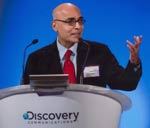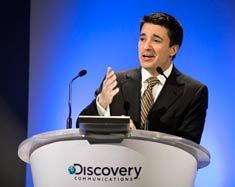Researcher removes roadblocks for people with limited income and literacy
With debate over unequal access to health care raging in the U.S., one place where the racial and economic divide in health is greatest is getting scant attention: the Internet.
Health websites number in the tens of millions, but most are written at a level only high school or college graduates can understand. As a result, their use by those with limited education or income is low. Among the poorest Americans, broadband Internet access has actually declined in the past year.
“You or I will go online to research a disease we’ve just been diagnosed with or check on the latest health claims regarding a favorite food. That’s just not a realistic option for the poor, many minorities, and those with limited education,” says Kasisomayajula Viswanath, HSPH associate professor of society, human development, and health. “I’m interested in trying to understand how inequalities in communication result in inequalities in health. In terms of access to information, there are profound differences between the haves and the have-nots.”

WRONG TURNS ON THE INTERNET
Viswanath believes that such access can improve health outcomes. Cancer prevention and treatment, diabetes management, tobacco control, and stress levels could all be improved by knowledge gained from the Internet. “These are conditions that, in many cases, are preventable—or, if you have them, you can do something about them to reduce their effects on your health. But if you don’t have the information, or can’t understand the information, you can’t benefit from it to improve your chances to lead a healthier life.”

Some of the Internet stumbling blocks encountered by those with lower incomes and literacy levels are the same as those that everyone experiences from time to time: annoying pop-ups, too many choices, slow connections. “People with adequate education and resources can overcome these frustrations,” says Viswanath. They buy a faster computer or get broadband at home. They turn on the pop-up blocker or pay someone to remove a virus that is causing problems. They can read quickly enough to pick out the best website choices from the millions Google serves up. “But for the poor and those with limited literacy, these problems are overwhelming,” he observes.
At a gathering sponsored by Discovery Communications and hosted by HSPH alumnus John Whyte, MD, MPH ’93, at Discovery in Silver Spring, MD, recently, Viswanath told a group of HSPH alumni and friends that as part of one study he is conducting, free Internet training is being provided to help the underserved obtain health information. He is also developing a simple health Web portal that enables those with limited literacy to get on the health information superhighway.
“As a media company with more than 1.7 billion subscribers in 170 countries, we’re deeply committed to finding new ways to empower people to lead healthier lives. The issues Dr. Viswanath talked about are important to us as a company and to me personally. ”
John Whyte, MD, MPH ’93
Discovery Health Vice President for Continuing Medical Education
As a first step in the research study, Viswanath conducted focus groups among adults with low income and low education levels, and among minorities. He did separate usability testing of a Web portal with individual volunteers—similar to that done by sophisticated website designers for multimillion-dollar clients. Input from the usability testing led him to design the next iteration of the health Internet portal (see it at www.clicktoconnect.org).
Most focus group members were using computers at school or a library, and were exploring the Web for school work or resume writing. They often relied on younger family members for help with the Internet.
BUILDING A BETTER INFORMATION HIGHWAY
With the input from the focus groups, Viswanath designed a new health Internet portal with simpler language, a two-column layout rather than three or more columns, a simple navigation system, technology that would load quickly onto older computers, and no distracting pop-ups. The website is written at grade levels 6-8. The website includes content on a wide range of health related topics, both as text and, in some cases, with access to video. The trial is currently in its fourth year.
Viswanath acknowledges that, for now, training programs in Internet use will need to be offered by nonprofit groups with a commitment to the underserved. Ideally, he would like to see broader measures that guarantee equal access to Web-based health resources. Among these: subsidized cable and broadband Internet access for the poor; websites that are easily navigable by people with low literacy; consistent health information across official websites produced by government agencies and non-governmental health organizations; and widespread training on how to use the Web to acquire health information—including training offered at work.
“In the end, communications inequalities are more addressable than most of the other social factors that determine how healthy or unhealthy you will be,” Viswanath says. “Social determinants that influence health—such as social class, discrimination and violent neighborhoods—are vitally important problems, but difficult to address when compared to communication inequalities. As a society, we should be able to develop health websites that people with limited literacy skills can use. And we should be able to find ways to provide subsidized broadband access and inexpensive computers for the poor.”
As Viswanath sees it, such equitable access to health information is rooted in democracy itself: “I think of this in terms of the Jeffersonian notion of an informed citizenry. If you don’t have information, you are acting on a lack of information or misinformation, which means you are unable to act in your own best interest.”
Julie Rafferty is senior director of development marketing and planning at the Harvard School of Public Health.